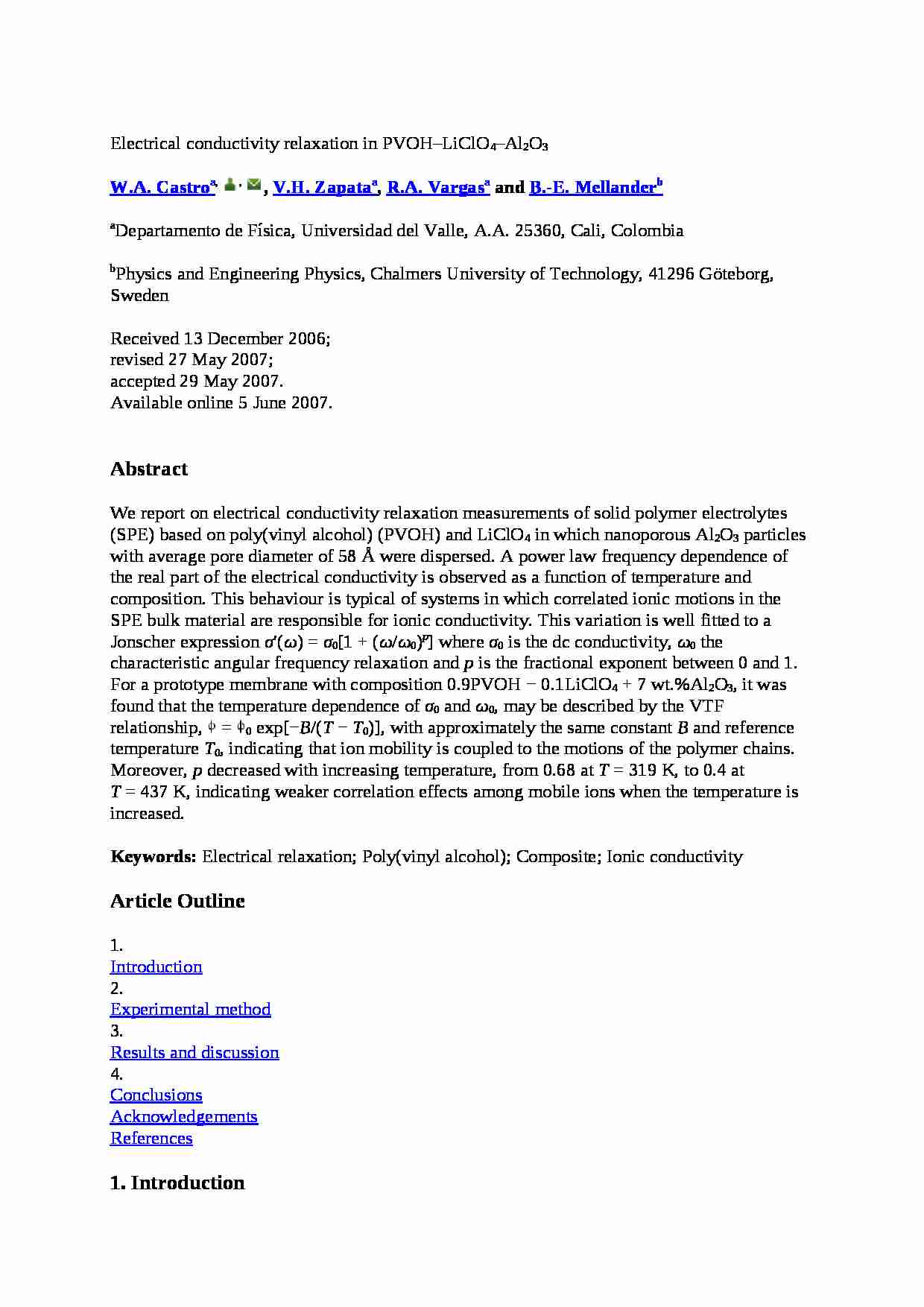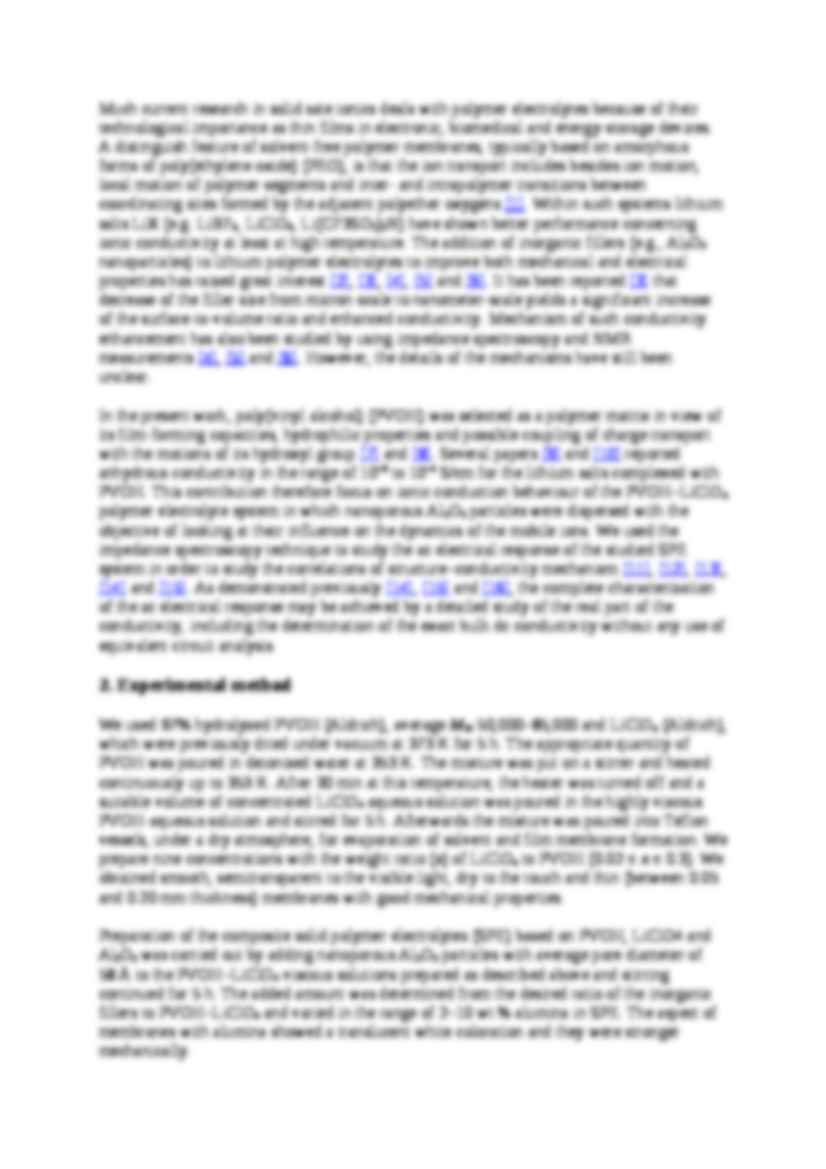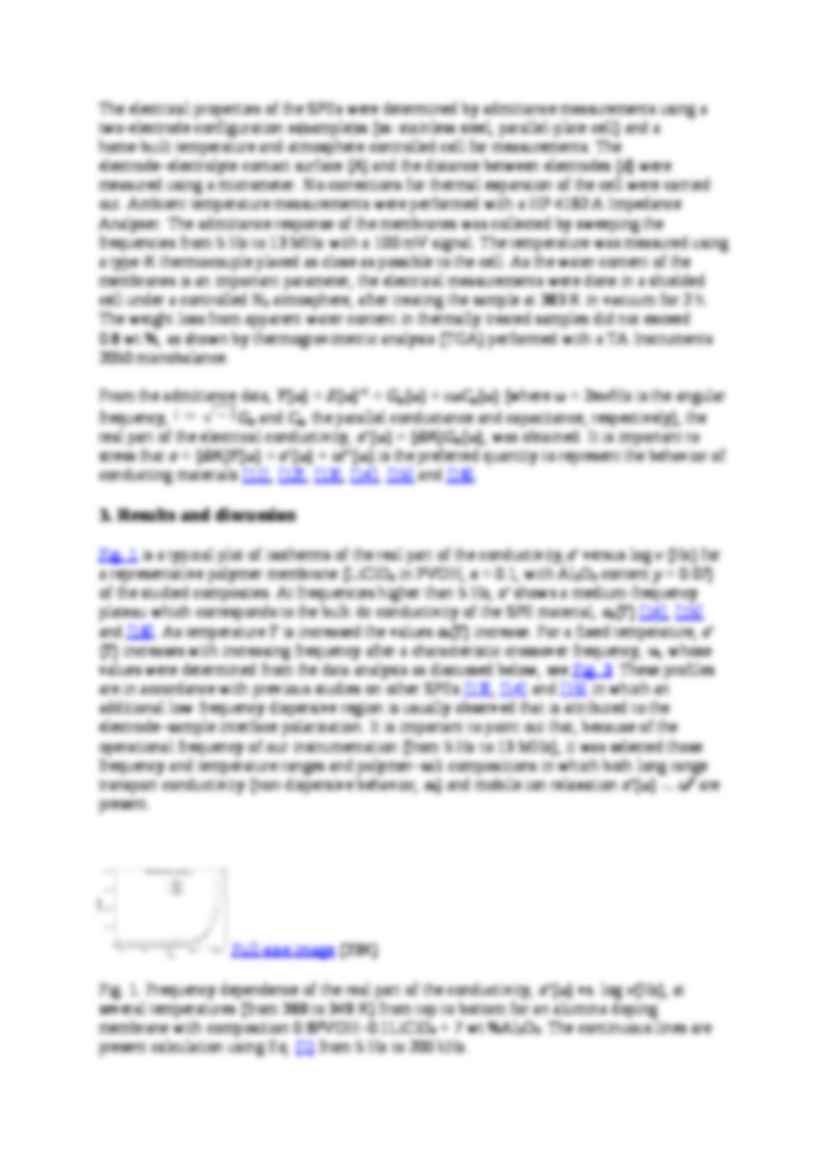To tylko jedna z 8 stron tej notatki. Zaloguj się aby zobaczyć ten dokument.
Zobacz
całą notatkę



Electrical conductivity relaxation in PVOH-LiClO4-Al2O3 W.A. Castroa, , , V.H. Zapataa, R.A. Vargasa and B.-E. Mellanderb
aDepartamento de Física, Universidad del Valle, A.A. 25360, Cali, Colombia
bPhysics and Engineering Physics, Chalmers University of Technology, 41296 Göteborg, Sweden
Received 13 December 2006; revised 27 May 2007; accepted 29 May 2007. Available online 5 June 2007. Abstract
We report on electrical conductivity relaxation measurements of solid polymer electrolytes (SPE) based on poly(vinyl alcohol) (PVOH) and LiClO4 in which nanoporous Al2O3 particles with average pore diameter of 58 Ĺ were dispersed. A power law frequency dependence of the real part of the electrical conductivity is observed as a function of temperature and composition. This behaviour is typical of systems in which correlated ionic motions in the SPE bulk material are responsible for ionic conductivity. This variation is well fitted to a Jonscher expression σ′(ω) = σ0[1 + (ω/ω0)p] where σ0 is the dc conductivity, ω0 the characteristic angular frequency relaxation and p is the fractional exponent between 0 and 1. For a prototype membrane with composition 0.9PVOH − 0.1LiClO4 + 7 wt.%Al2O3, it was found that the temperature dependence of σ0 and ω0, may be described by the VTF relationship, = 0 exp[−B/(T − T0)], with approximately the same constant B and reference temperature T0, indicating that ion mobility is coupled to the motions of the polymer chains. Moreover, p decreased with increasing temperature, from 0.68 at T = 319 K, to 0.4 at T = 437 K, indicating weaker correlation effects among mobile ions when the temperature is increased.
Keywords: Electrical relaxation; Poly(vinyl alcohol); Composite; Ionic conductivity
Article Outline
1. Introduction
2. Experimental method
3. Results and discussion
4. Conclusions
Acknowledgements
References
1. Introduction
Much current research in solid sate ionics deals with polymer electrolytes because of their technological importance as thin films in electronic, biomedical and energy-storage devices. A distinguish feature of solvent-free polymer membranes, typically based on amorphous forms of poly(ethylene oxide) (PEO), is that the ion transport includes besides ion motion, local motion of polymer segments and inter- and intrapolymer transitions between coordinating sites formed by the adjacent polyether oxygens [1]. Within such systems lithium salts LiX (e.g. LiBF4, LiClO4, Li(CF3SO2)2N) have shown better performance concerning ionic conductivity at least at high temperature. The addition of inorganic fillers (e.g., Al2O3 nanoparticles) to lithium polymer electrolytes to improve both mechanical and electrical properties has raised great interest
(…)
… in the highly viscous PVOH-aqueous solution and stirred for 5 h. Afterwards the mixture was poured into Teflon vessels, under a dry atmosphere, for evaporation of solvent and film membrane formation. We prepare nine concentrations with the weight ratio (x) of LiClO4 to PVOH (0.02 ≤ x ≤ 0.3). We obtained smooth, semitransparent to the visible light, dry to the touch and thin (between 0.05 and 0.20 mm…
… deviation from a linear Arrhenius relation. The addition of Al2O3 enhanced the dc conductivity but did not change its temperature dependence profile. This suggests that the Al2O3 addition influences the carrier concentration of the polymeric electrolyte system but does not change the intrinsic mechanism for the ionic conduction. The conductivity data in Fig. 2 were better fitted to the Vogel-Tamman-Fulcher…
... zobacz całą notatkę






Komentarze użytkowników (0)